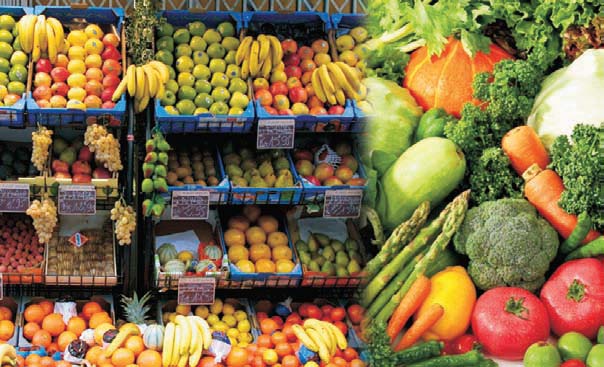 The paper also discusses their future potential and possible impact on national food security of diversification into non-PDS, fruits, vegetables and other commercial crops. This kind of analysis is likely to help planners and policy makers in choosing appropriate policy framework in evolving the strategies for enacting and operationalization of Food Security Act.
The paper also discusses their future potential and possible impact on national food security of diversification into non-PDS, fruits, vegetables and other commercial crops. This kind of analysis is likely to help planners and policy makers in choosing appropriate policy framework in evolving the strategies for enacting and operationalization of Food Security Act.
With increase in population, income and urbanization, the demand for food grains has also increased and diversified. Although there has been more than four-fold increase in food grain production from 1950-51 (50.82 mt) to 2008-09 (233.88 mt), a large section of our population continues to suffer from malnutrition and inadequacy of food grains. On the other hand degradation of land, water and other natural resources have started impacting production through increased biotic and abiotic stresses.
Of late, the rate of growth in productivity has shown declining trend in both irrigated and rainfed areas. Occasionally productivity and production of coarse cereals especially bajra (Pearl millet) goes high in favourable rainfall years and market prices crash (undesirable for primary producers i.e. farmers). Under these circumstances, maintaining the pace of increase in overall food grain production to meet the demand of growing population requires continuous innovation and careful planning to harness the potential of available natural resources keeping in view the path of sustainable growth rate.
rainfed areas. Occasionally productivity and production of coarse cereals especially bajra (Pearl millet) goes high in favourable rainfall years and market prices crash (undesirable for primary producers i.e. farmers). Under these circumstances, maintaining the pace of increase in overall food grain production to meet the demand of growing population requires continuous innovation and careful planning to harness the potential of available natural resources keeping in view the path of sustainable growth rate.
 In this report, demand and supply issues have been examined in the light of productivity, production, pipeline technologies, marketed surplus, private trade, market arrivals, procurement, safe storage, movement and distribution logistics of food grains.
In this report, demand and supply issues have been examined in the light of productivity, production, pipeline technologies, marketed surplus, private trade, market arrivals, procurement, safe storage, movement and distribution logistics of food grains.
The report concludes with the following -
- Diversification into non-PDS, non-food and better commercial crops of fine and superfine basmati rice, premium quality and premium priced wheat in Malwa region of MP, sugarcane, soybean, Bt cotton; vegetables, fruits; leakages across the porous borders, hoarding etc. are important challenges of organising committed food stocks.
- There is very little international trade in the staple food of rice while high volatility in the international prices and trade barriers of wheat and other foods complicate imports for maintaining stocks.
- Relatively high productivity potential of irrigated regions have been harnessed; there is a larger concern of sustaining ground water supplies and further productivity improvements will be high tech and input intensive. Presently, scope of improved technologies and realizing relatively higher marginal response or returns to inputs is better in the rainfed region. An additional 10-11 million tonnes of food grains can be managed by ensuring rain water conservation and improved practices in about 20-27 million ha. However, coarse cereals are the major crops of rainfed area and consumers’ preference for nutritious coarse cereals is declining. Rainfed regions are complex, diverse, risky and 13-15 times under invested compared to irrigated command development.
- Innovative safety nets against risks would be required to convince farmers for adopting improved rainfed technologies and intensive inputs. Keeping in view the necessity of vast range of enabling policies, technologies, infrastructure, investment portfolio, governance, volatility in the domestic and international production, etc., matching of demand and supply is quite a challenging task. It would be preferable to implement in stages and expand according to developing or emerging production scenarios.
Download the report below -
/articles/challenges-food-security-and-its-management-position-paper-national-rainfed-area-authority